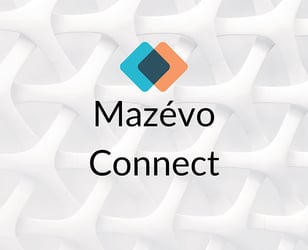There are two goals that just about every event scheduling department strives for: providing an exceptional experience for customers who are reserving space, and making the process efficient for staff. There are many things that factor into achieving those objectives, including having effective scheduling processes, well-trained staff, and a powerful, intuitive event scheduling system.
But maybe even more fundamental than those factors is having an in-depth understanding of your customers–their wants and needs, their experience in reserving space for events, etc. If you’re not seeing things from their perspective, the process can easily go off the rails. You ask them for information they don’t have or that isn’t relevant for their event, they get confused by policies and procedures that aren’t as concise as they should be, etc. In short, their experience becomes anything but exceptional.
And the same is true for your scheduling team. If customers struggle to answer your questions, your team members are forced into a lot of back and forth trying to get the information they need, wasting valuable time and increasing everyone’s stress level. On the flip side, when you take the time to get to know your customers, everything flows much more smoothly!
Benefits of Understanding Your Customers
There are many advantages of learning to see things from your requesters’ point of view. They include:
- Greater efficiency and increased focus on event success. The better you know your customers, the more productive your interactions with them will be. And the time you save in getting the information you need can be invested in ensuring their event is a huge success. For other ways to improve efficiency see: The Ultimate Guide to Taking Online Room Scheduling Requests
- Fewer miscues. Communication is more of an art than a science. No matter how clear you and your customers attempt to be about what’s required for a successful event, there are bound to be misunderstandings. But that risk is significantly lower if you really get to know the people who use your space, the types of events they hold, and their preferences on everything from room layouts to catering services.
- Happier customers and enhanced reputation. When a well-designed request process is followed by a well-executed event, your customers appreciate it. And they talk about it. Whether in personal conversations or on social media, their positive feedback can enhance the reputation of your scheduling department, which can lead to many benefits like increased funding and support, better career advancement opportunities, etc.
And those are just some of the benefits.
Determining What Customers Need in a Room Scheduling Process
The key to understanding your customers and how best to meet their scheduling needs is asking the right questions. From our decades of experience in room and resource management, here are some that we have found to be particularly helpful:
- What do they expect from your events team? What kind of assistance do they need? What type of response time are they anticipating when they ask questions? What do they see as your responsibilities and their own for executing a successful event?
- What are the most common types of events held by your customers? This can provide insight both on the best scheduling process for their requirements and the resources you need to make available to them.
- How much experience does your average customer have in planning events? If it’s a fairly experienced audience, you may be able to conduct most communication electronically. If they are primarily “newbies,” it’ll likely be best if they get some face time with your staff.
- How familiar is the average person with your scheduling policies? The more they know about the rules, the less oversight will be needed in that area.
- How familiar is the average person with your facilities? If the answer is “not very,” you should invest some time in developing more or better materials for familiarizing requesters with what you offer. This should include written descriptions, diagrams, and photos ideally.
- What kind of post-scheduling and post-event feedback do people have? Obviously, you want to address any problems that come up frequently in reviews. You may also want to promote the positives if your goal is to increase event volumes.
When and how you pose these questions will vary based on your situation. For some scheduling teams, an in-person interview with each requester makes sense. For others, a web-based survey is most efficient. Whatever method you choose, what’s important is that you ask the questions as often as needed to stay on top of what are likely continuously evolving needs.
And, of course, it’s also important to talk with your team on a regular basis to be sure you understand their needs and expectations regarding the scheduling process!
Best Practice for Crafting Your Scheduling Processes? Find the Common Denominators.
You’ve gotten to know your customers. Now what? When developing your scheduling processes, it’s best to craft them to address the issues you face most frequently first. Yes, you’ll need to know how to handle infrequent and unusual events, too. But you can take on that challenge after you’ve got solid procedures in place for the kinds of gatherings your team is contending with on a daily basis.
Ultimately, if you create a culture where getting to know your customers and their needs is a top priority, your scheduling department will enjoy great success.
What have you done to get to know your customers? Let us know in the comments below.



